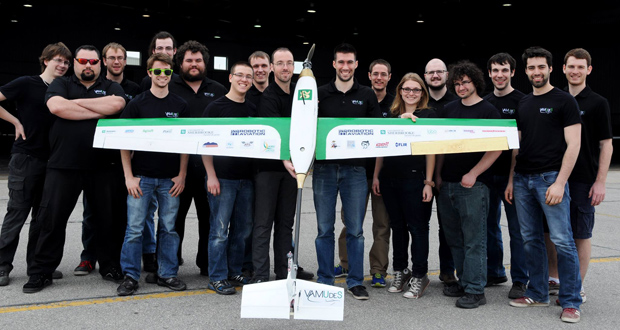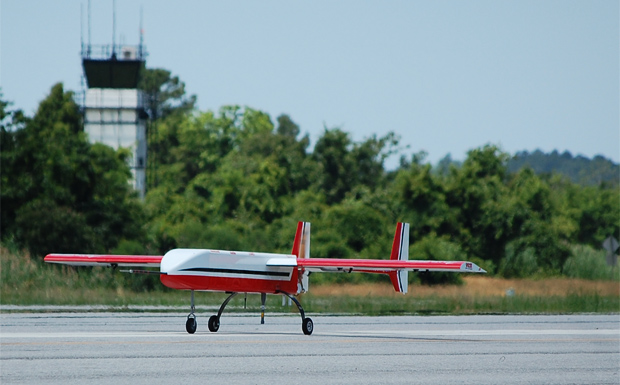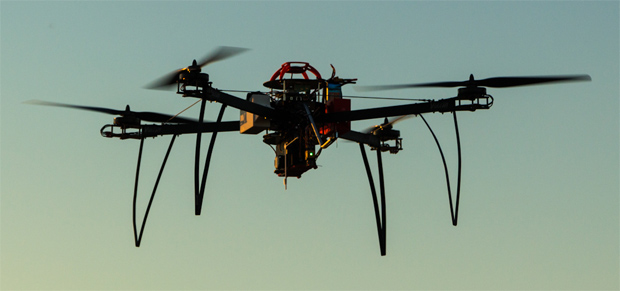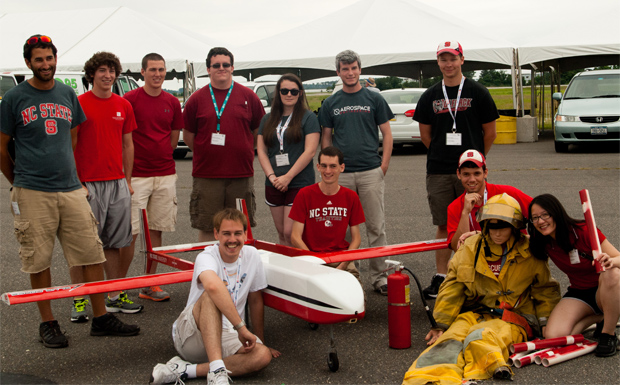
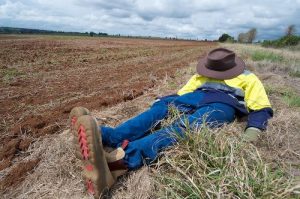
August 27, 2014
Poor old Outback Joe has been lost near Kingaroy since 2007, but would-be rescuers haven’t given up hope of finding him and taking home $50,000 in prize money.
“Outback Joe” is a dummy who is lost in the bush – literally – and his “rescuers” are UAV (unmanned aerial vehicle) teams from around the world.
Competitors have to design and build their UAV.
They then have an hour to launch it successfully, remotely locate Outback Joe, then deliver an “emergency package” to him and return their aircraft safely.
It sounds easy, doesn’t it? After all, these days US military drones controlled in California routinely bomb targets in Yemen …
However the UAV Challenge is a real challenge. The first prize hasn’t be won in the five years that the competition has been held in Kingaroy: 2007-2010 and 2012.
The US-style military drones are actually remotely piloted aircraft; the UAVs competing in Kingaroy have to complete their tasks autonomously.
In 2010, an international UAV team – students from the University of North Dakota – located the elusive dummy but failed to drop the bottle of water to him so missed out on the first prize. However, they did take home $15,000 as consolation.
In 2012, Canberra UAV also located Joe but didn’t deliver the “rescue package”. The Canberra team will be back to try again this year.
The UAV Challenge is a joint initiative between the State Government, the Australian Research Centre for Aerospace Automation (ARCAA, a partnership between QUT and CSIRO), Aviation Development Australia Limited and AUVS-Australia.
There are hopes that this style of technology could prove useful in real search-and-rescue missions.
Jonathan Roberts, Professor in Robotics at the Queensland University Of Technology, said 88 teams had initially submitted entries for the 2014 Challenge but after the final documentation stage, 20 teams qualified.
And this year he expects Outback Joe to be located after advances in the technology over the past two years.
“Last time we had nine teams qualify and this time we have 20 teams qualified,” he said.
“The technology has matured a lot in two years and we finally expect a team to complete the Challenge!”
The teams will undergo scrutineering on Monday, September 22, at Kingaroy Airport with flights starting the the next day and continuing until Friday, September 26.
* * *
2014 Outback Challenge entrants:
1. Aeolus (Singapore)
2. Open UAS (Netherlands)
3. NCSU Aerial Robotics Club (USA)
4. Team Condor (Australia/Colombia)
5. Monash UAS (Australia)
6. Perth UAV (Australia)
7. IRSA Group (Iran)
8. Compass UAV (Australia)
9. Swiss Fang (Switzerland)
10. MelAvio (Poland)
11. VAMUdeS (Canada)
12. SFWA (Australia)
13. TinBox UAV 2 (Australia)
14. Robota (USA)
15. Rescue Robotics (Australia)
16. Team Aetournos (France)
17. H2Joe (Australia)
18. MUROC Wild Hogs (Australia)
19. Canberra UAV (Australia)
20. Team Thunder (Australia)
* * *
Fifteen high school teams have also entered although the final entrants in this category have not yet been announced.
The school teams will be competing for a total of $10,000 in prizemoney: 1st $5000, 2nd $2000, 3rd $1000 and search phase winner $2000.
Related articles
